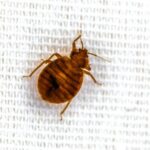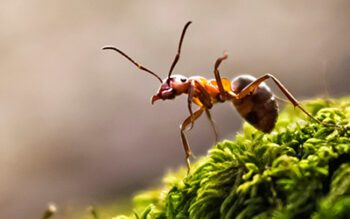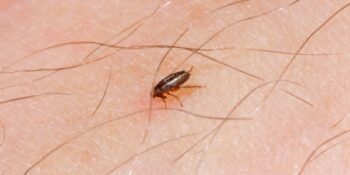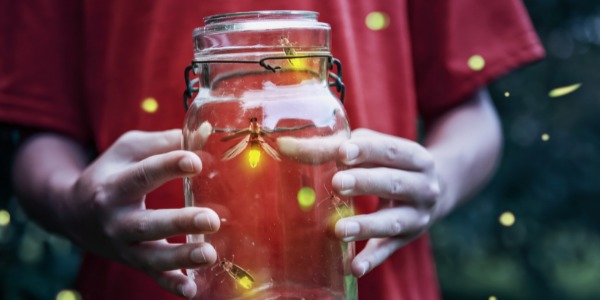
Catching a glimpse of their glow in the night is always a magical summer feeling, but what makes fireflies glow? We’re going to break it down for you.
Firefly vs. Lightning Bug—Which Is It?!
First things first—fireflies aren’t really flies! Instead, they belong to a family of insects called the Lampyridae (from the Greek “lampein,” meaning “to shine”) which belongs to the beetle order Coleoptera. This means the world’s more than 2,000 species of fireflies are actually soft-bodied beetles, and you may hear them referred to by a couple of different names; fireflies and lightning bugs both refer to the bioluminescent insects we associate with summertime on Long Island. 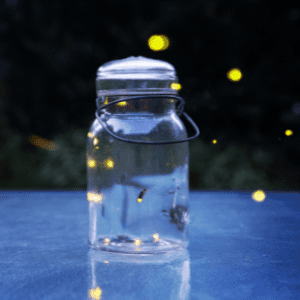
When Do Fireflies Come Out?
During the winter, firefly larvae live underground before maturing in the spring and finally, emerging during the summer. The exact dates you can catch these glowing insects in your yard vary from year to year and is dependent on factors like air and temperature. Unlike most of us probably, fireflies love the summer heat and humidity, which is why once summer weather arrives, fireflies start popping up in Long Island yards. Wet spring seasons can also encourage fireflies to emerge, as these insects often feed on other pests like snails and pill bugs that rain brings.
What Makes Fireflies Glow?
Interestingly enough, all fireflies glow as larvae, whereas only some adult fireflies produce light. As mentioned earlier, fireflies create their special glow through a chemical reaction called bioluminescence, which is the production and emission of light by a living organism. The light produced by fireflies is extremely efficient; in fact, it’s considered the most efficient light in the world, because almost all of the chemical reaction’s energy turns into light.
Usually, the bioluminescence occurs in fireflies’ specialized light-emitting organs located on their lower abdomens. Their light flashes are generally coming from male fireflies seeking females. A male firefly will flash a specific light pattern, and if the female firefly likes what she sees, she’ll reply with light flashes of her own, until the two meet and fall in firefly love (or something like that). A firefly’s glowing light can serve as a warning signal to predators because of a defensive steroid in fireflies’ blood called lucibufagins, which makes fireflies unappetizing prey.
Do Fireflies Cause Harm?
Fireflies aren’t just beautiful, but they’re also beneficial! Fireflies don’t bite or attack, carry diseases or venom, or damage your home; they’ll even feed on other insect larvae you have!
Got a “Burning” Insect Question? Ask Our Entomologist!
Firefly season is upon us! To enjoy the wonder of bioluminescence in your own yard, find a relatively dark place just after sundown and take in the beauty of the firefly!
Got a “burning” question about fireflies or summer pests? Click here to ask our on-staff entomologist!


